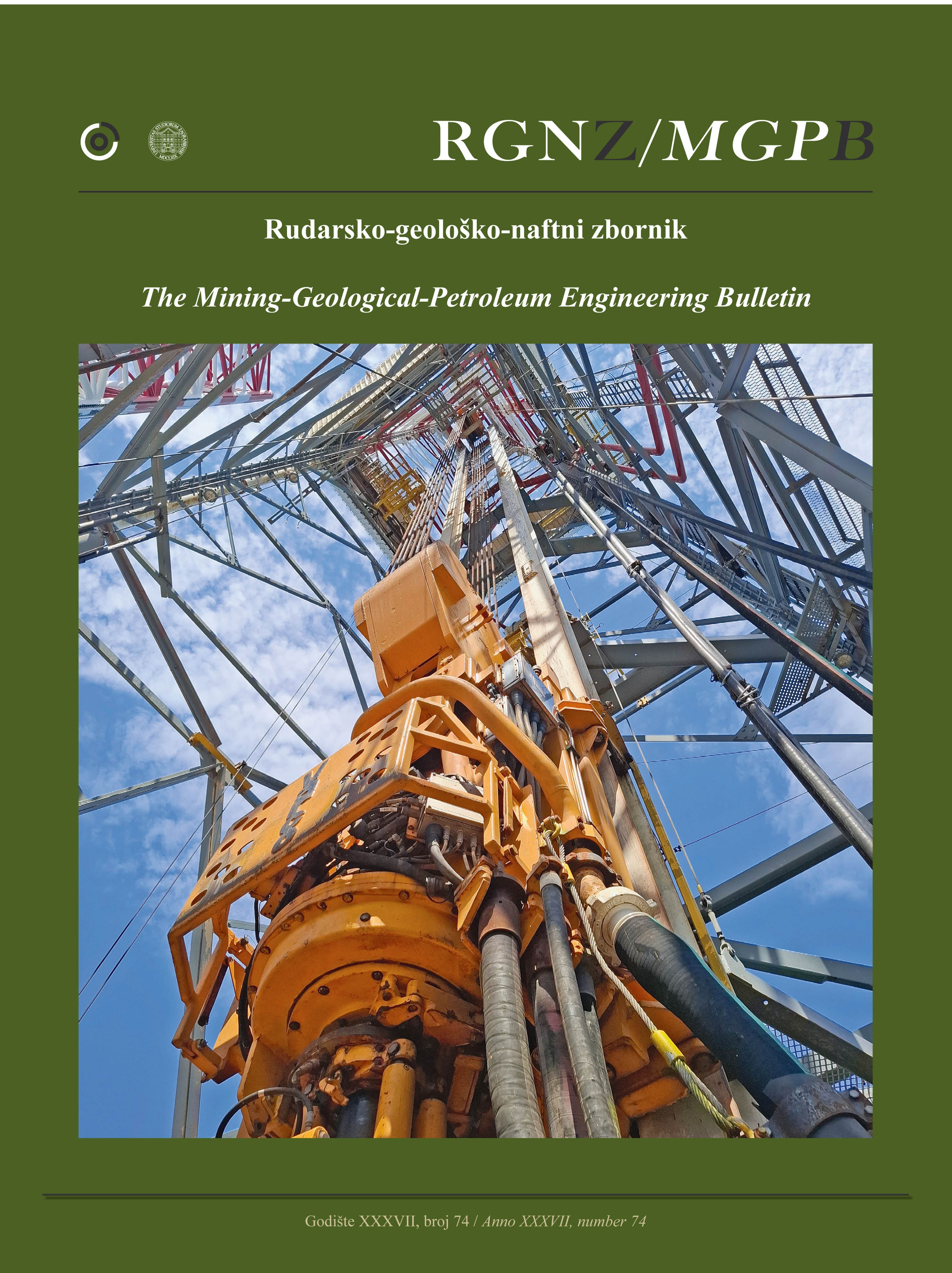Advanced Clustering Techniques for Tin Deposit Classification in Malaysia: A Machine Learning Approach
DOI:
https://doi.org/10.17794/rgn.2025.3.10Keywords:
tin deposits, clustering techniques, geochemical analysis, Malaysia, mineral explorationAbstract
This study explores the application of advanced clustering techniques—Spectral Clustering, Gaussian Mixture Models (GMM), and a hybrid approach combining Autoencoders with K-Means—to classify tin deposits in Malaysia. Geochemical data from 28 tin samples across regions such as Pengkalan Hulu North, Menglembu, Klian Intan, and Sungai Lembing were analysed to identify distinct mineralization patterns. The results revealed that the integration of Autoencoders with K-Means yielded the highest clustering quality, with a Silhouette Score above 0.4 and a Calinski-Harabasz Index of 90 at four clusters, outperforming the other methods. The classification effectively distinguished between Pegmatite, Hydrothermal Veins, Polymetallic, and Disseminated deposits, aligning with the geological characteristics of the regions. These findings enhance the understanding of tin deposit distribution, offering significant potential for optimizing exploration strategies and mining operations, thereby contributing to the sustainable economic development of Malaysia's tin mining industry.
Downloads
Published
Issue
Section
License
Copyright (c) 2025 Meisam Saleki, Kamran Mostafaei, Zakaria Bin Endut, Mohammad Nabi Kianpour

This work is licensed under a Creative Commons Attribution 4.0 International License.
Creative Commons-BY
Authors who publish with this journal agree to the following terms:
In agreeing this form, you certify that:
- You read the ethical codex of the RGN zbornik available at journal web.
- You submitted work is your original work, and has not previously been published and does not include any form of plagiarism.
- You own copyright in the submitted work, and are therefore permitted to assign the licence to publish to RGN zbornik.
- Your submitted work contains no violation of any existing copyright or other third party right or any material of an obscene, libellous or otherwise unlawful nature.
- You have obtained permission for and acknowledged the source of any illustrations, diagrams or other material included in the work of which you are not the copyright owner.
- You have taken due care to ensure the accuracy of the work, and that, to the best of your knowledge, there are no false statements made within it.
- All co-authors of this submitted work are aware of, and in agreement with, the terms of this licence and that the submitted manuscript has been approved by these authors.
Publication licence
You retain copyright in your submitted work, according to journal license policy (CC-BY). By signing this form you agree that RGN zbornik may publish it under the publication licence. In summary the licence allows the following:
Anyone is free:
- To copy, distribute, display, and perform the work.
- To make derivative works.
Under the following conditions:
- The original author must always be given credit.
- The work may not be used for commercial purposes.
- If the work is altered, transformed, or built upon, the resulting work may only be distributed under a licence identical to this one.
Exceptions to the licence
In addition to publishing the work printed under the above licence, RGN zbornik will also enable the work to be visible online.
The journal editorial can change the licence rules anytime but it cannot retroactively restrict author(s) rights.


